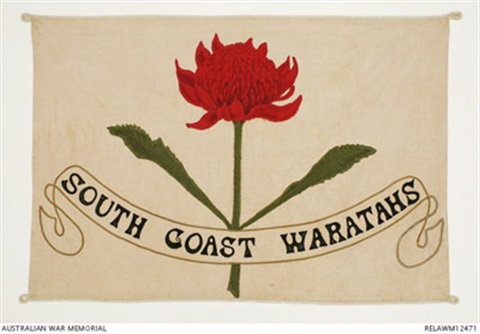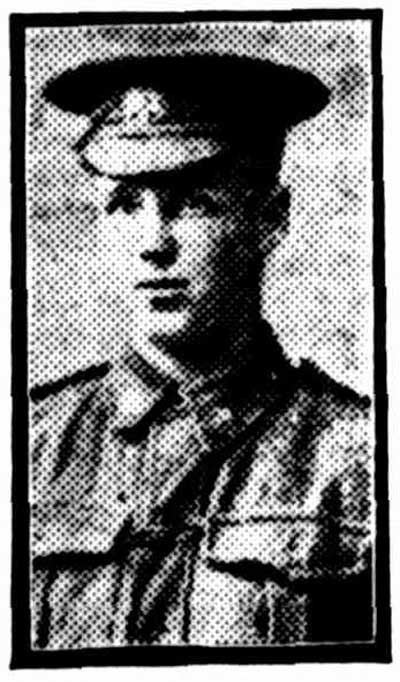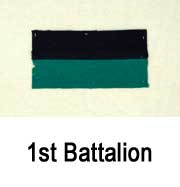South Coast Waratahs

A recruitment method that enjoyed popularity during the 1st World War in 1915 and 1916 was the ‘snowball’ recruiting march.
Beginning with a small group of men, a march would follow a chosen route, usually through rural communities, finishing at a town or city with a training camp.
At each town or community visited civic receptions and recruitment meetings would be held to welcome the marching volunteers and encourage local men to enlist, and so the march would ‘snowball’ in size.
The South Coast Waratahs flag was made by the Nowra Branch of the Red Cross Society for the South Coast Waratahs Recruiting March.
Captain Blow, who had been selected to lead the march, was presented with the banner on 30 November 1915 by the branch’s secretary Miss Emma Bice and its treasurer Mrs Ruby Hayes.
The Waratahs left Nowra on 30 November 1915.
Approximately 120 men enlisted as the march progressed north along the coast to Sydney where it arrived on 18 December 1915.
The men underwent three months military training at Liverpool Camp and on its completion returned home for a short spell of leave.
At 1 of the major functions held to farewell them the banner was placed in the care of Mrs Nea Rodway, the president of the Nowra branch of the Red Cross Society.
She stated she would ensure that it was given 'pride of place' in the society’s workroom.
Waratah recruits began to depart for overseas service in March 1916 and about 30 were killed.
In 1916 Kiama was selected to be a preliminary training camp for enlisted men who would go to Liverpool for more strenuous training.
The enlistment figures for snowball marches tended to be low considering the amount of effort that went into organising them and they soon fell out of favour.
An effort was made to revive them in 1918 to boost falling enlistment numbers, when a series of ‘Freedom’ marches were held, but they were largely unsuccessful.
Waratahs born in Kiama district
Name: GIBSON, William Henry Irving
Service No.: 5103
DOB: 1 August 1895
Birthplace: KIAMA
Rank: Private
Fate: KIA (Killed in Action) 22-25 July 1916
Unit(s):
